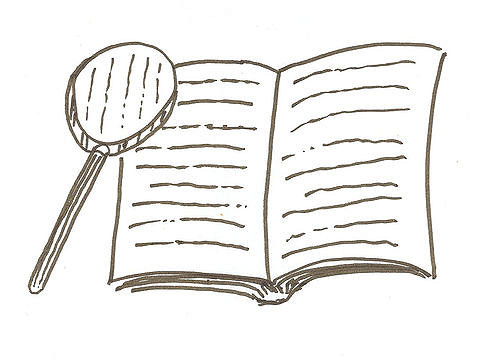What if I told you there was a writing tool that could help you nail your final draft, slash time and effort off the front of the editing process, and set up your novel for acceptance by an agent or publisher? Such a beast really does exist, and it’s something you already know you’ll need to write: your synopsis.
I see that suspicious look on your face. Isn’t a synopsis the outline-y thing you send along with a cover letter to agents and publishers? Why should you work on that so early in the game? Maybe you’ll be self-publishing and don’t plan to pitch your book anywhere. You won’t even need a synopsis!
Except that you do need a synopsis—and you need it right now, while you’re still wrapping up your final draft. Every author agonizes over the final draft, wondering if it they’ve managed to hit all the right notes. It’s so subjective—and the longer you stare at your manuscript, the murkier it becomes. The solution is so simple: your synopsis.
A synopsis is a road map of your book that reveals whether you’ve woven a coherent, cohesive story. It’s the objective, high-level overview that will let you spot holes in your manuscript like a hawk spotting a rabbit dashing across the snow. Your synopsis can save you from wasting time and money moving forward with a manuscript containing big-picture issues neither you nor your beta readers spotted.
Get everything working together
So many authors come to me for editing still unable to articulate what’s really going on in their books. How does one thing lead to the next?
If you’ve conscientiously slogged through multiple revisions, you’ve spent lots of time isolating and tinkering with parts and pieces of your book: the dialogue, the pacing, the story arc, and so on. How do you know when you’ve gotten them right? Your synopsis hands you the answer.
It all starts with the turning points of your plot—the opening hook, the inciting event, problems, choices, reversals, and so on. If you’re a plotter who works from outlines, you’re probably already familiar with these conventions of fiction. But even pantsers can get a handle on their book once it’s written by using those points to write a synopsis.
Does your badass hero spend more time waiting for things to happen than pushing the plot forward? Do plot threads peter out without resolution? Do the sidekick and the antagonist show more agency than the hapless protagonist? When you boil entire sections of your book down to two or three sentences, you’re forced to confront what’s actually made it from your head onto the page. It may not turn out to be exactly what you’d imagined.
Read more: 12 reasons to learn how to write a brilliant synopsis
Lighten your editing load
Not only does a synopsis help you identify remaining big-picture problems, but it will save you time and money when it’s time for editing. A synopsis helps your editor determine if your manuscript needs content editing or if it’s ready to move into line editing or copyediting. If you’re getting a content edit, it helps your editor quickly identify weak areas and places where your intentions didn’t quite make it onto the page. Less time evaluating your manuscript and deciding on a plan of attack means more time spent on editing—and that means time and money saved.
When you make writing your synopsis the final step of your writing and revision process, you can assure yourself, your editor, and potential agents and publishers that all the parts and pieces of your novel are in place and in fine working order.
📌 HOW TO WRITE A SYNOPSIS
➡️ Back to Basics: Writing a Novel Synopsis
➡️ The Sum of the Parts: Writing a Synopsis
Understanding how stories work changes everything. I’ll show you how to back up your creative instincts so your ideas hit home. It’s time to accelerate your journey from aspiring writer to emerging author.
Ready to get serious about your book? Apply to work with me.
Featured image: Tall Chris


